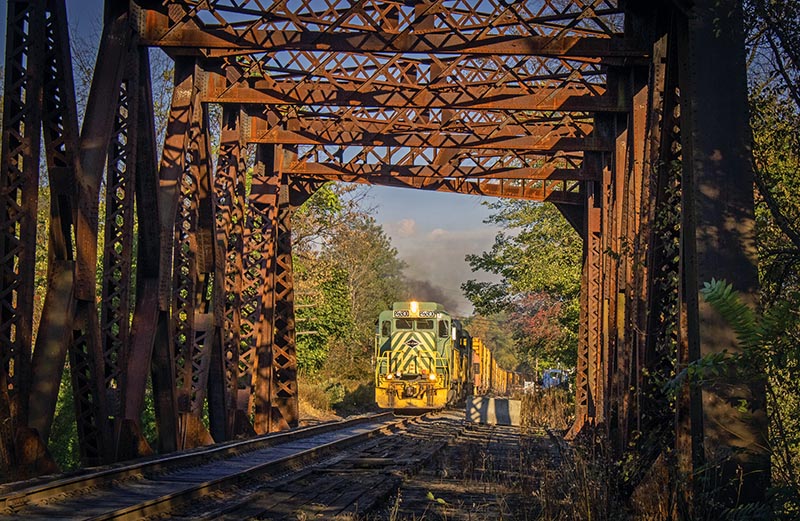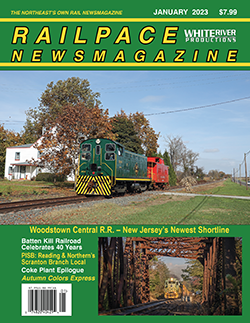 by Adam Kuczynski/photos as noted
by Adam Kuczynski/photos as noted
Short lines and regional railroads provide an abundance of interest in operations with a variety of photographic possibilities. While the Class-1 roads can provide heavy duty action, the scene can quickly become boring with a sea of look-alike widecabs. The smaller lines usually offer a more eclectic roster of locomotives, and there is also a more up-close and personal aspect, as train crews emerge from their cabs to switch local customers.
Such is the case on Northeast Pennsylvania’s Reading & Northern, where a network of branch lines offer fascinating operations. This month we will explore R&N’s Scranton Branch, which services customers six days a week out of R&N’s terminal in Pittston, Pa., with Pittston-based train PISB.
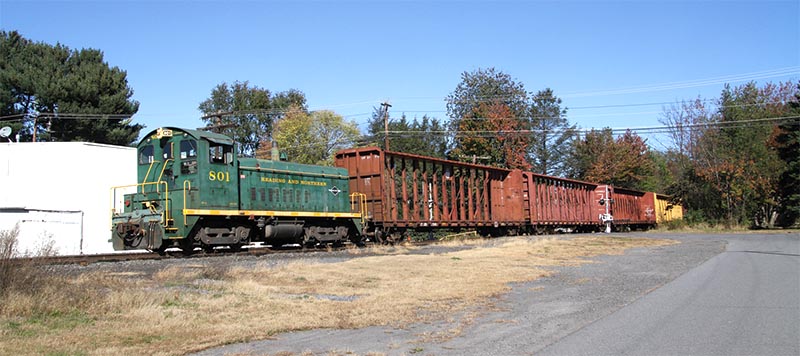
ABOVE: A single “pup’ handles empty bulkhead flats south at the Stephenson Street crossing in Duryea on October 20, 2017. The cars were picked up from Mariotti Building Products in Old Forge. The SW8 is ex-Conrail 8690, nee-Lehigh Valley 276. Tom Nemeth photo
The PISB crew is called at the Pittston Yard daily except Saturdays at 7:30 a.m., departing 30 to 60 minutes later, offering a daylight run northeast-ward to Scranton over former DL&W trackage. The crew finds their day’s train of inbound loads made up and readied by the Pittston YJPI yard crew, ensuring a prompt departure following call time. Motive power is generally two units, which can be a mix of GP30/39s, GP38s, SD38s, SD40s, and occasionally SW8 “pups,” SW-1500s or even MP15s. Train length can vary from a half dozen to more than 20 cars, depending on inbound traffic from road freight NRFF the previous evening. Trains can operate with single or two units, or “pull-pull” on any particular day.
Departing Pittston, the train curves northeast-ward on a connecting track to join the former Delaware, Lackawanna & Western Bloomsburg Branch. Formerly double-track, the “Bloom” extends north through the boroughs of Duryea, Old Forge, and Taylor , where the PISB eases around the west side of former DL&W Taylor Yard (now owned and operated by Norfolk Southern) to access the south leg of the “Taylor Wye” and enter the former DL&W Keyser Valley Branch. At one time, this line provided access to the DL&W main line west of downtown Scranton at a location designated as Cayuga Junction. This enabled Lackawanna through freights to diverge from the mainline at Cayuga Jct, travel south through the Keyser Valley area of Scranton (and one time home of the massive DL&W Keyser Valley Shops) to access Taylor Yard (via the north leg of the Taylor Wye), and ultimately continue northward via the Bloom to reconnect with the main at Bridge 60 interlocking in downtown Scranton to travel east.
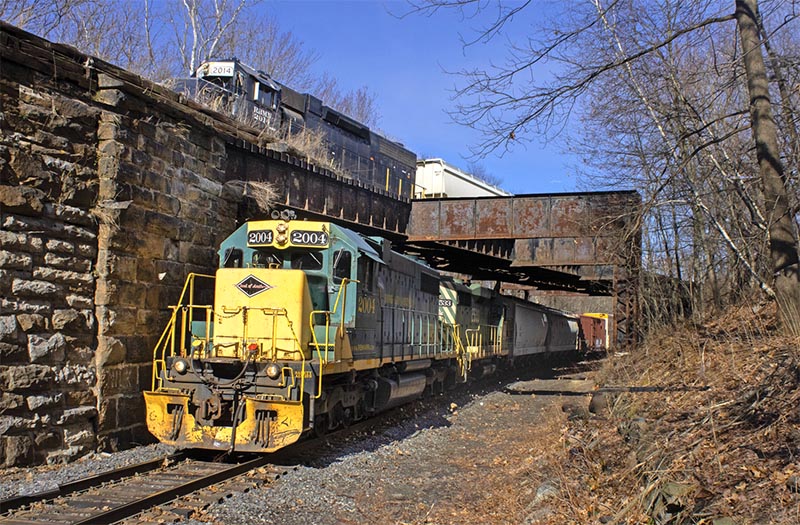
ABOVE: Over-Under: PISB with 2004 on the Bloom is paused at the Coxton Road grade crossing as CWPI returns from Crestwood and Penobscot on the former Lehigh Valley Mountain Cutoff with GP38 2014 (ex-NS 5603, nee-Southern 2833). The 2014 crew will head into Pittston Yard, after which the PISB will follow, with outbound cars making that evening’s NRFF road freight. Adam Kuczynski photo
Conrail severed the connection of the Keyser Valley Branch with the main line at Cayuga Junction, and the branch trackage was cut back about one mile. Today the Keyser Valley Branch portion of R&N’s Scranton Branch is where most of the customers can be found.
Departing Pittston, the first active customer is Mariotti Building Products, located on the former Bloom located west of the Moosic Road crossing in Old Forge. Just east of this grade crossing is a warehouse purchased by the Reading & Northern in 2020 as part of R&N’s total distribution service which provides rail, warehousing and local truck delivery.
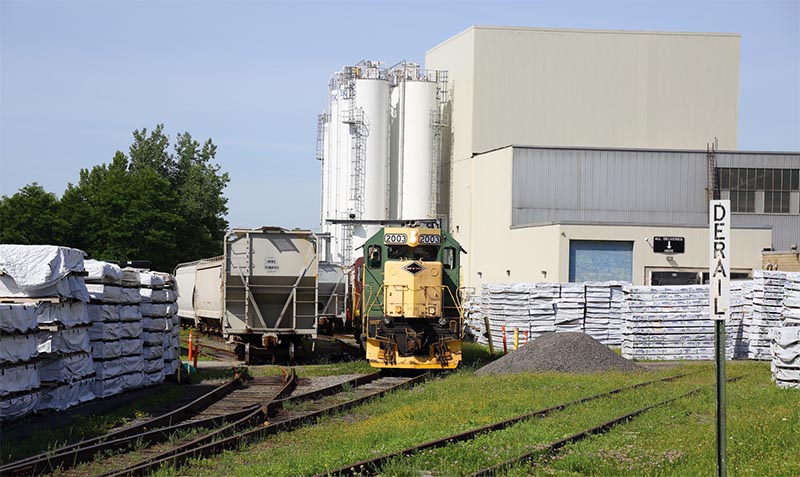
ABOVE: The PISB crew switches the Azek polymers plant at the north end of the Scranton Branch, June 25, 2021. The customer has two unloading tracks and two drill/storage tracks. The R&N crew makes multiple drill moves here. Tom Nemeth photo
From this point, the line turns north and enters a remote and scenic area through the Lackawanna River valley, with the Norfolk Southern Sunbury line on the opposite river bank. Three miles farther north, the R&N PISB emerges from the wilds and curves north east into Taylor Yard, passing under the Davis Avenue bridge and skirting Taylor Yard to the northwest. R&N has a haulage agreement with Canadian Pacific through NS here, and interchange has grown during the past few years.
Continuing from Taylor, the PISB swings north around the west leg of the Taylor Yard, passing under North Main Street in Taylor and bridging over Oak Street, to enter the Stauffer Industrial Park. The major customer served here is the Kane Distribution Center Building 5, which can accommodate up to 18 boxcars. In fact this is the largest customer on the entire line, receiving carloads of wine from California. Kane Logistics is switched after Noon, so loads destined there may be dropped on the single track while the crew continues north to service customers at the north end of the branch…


